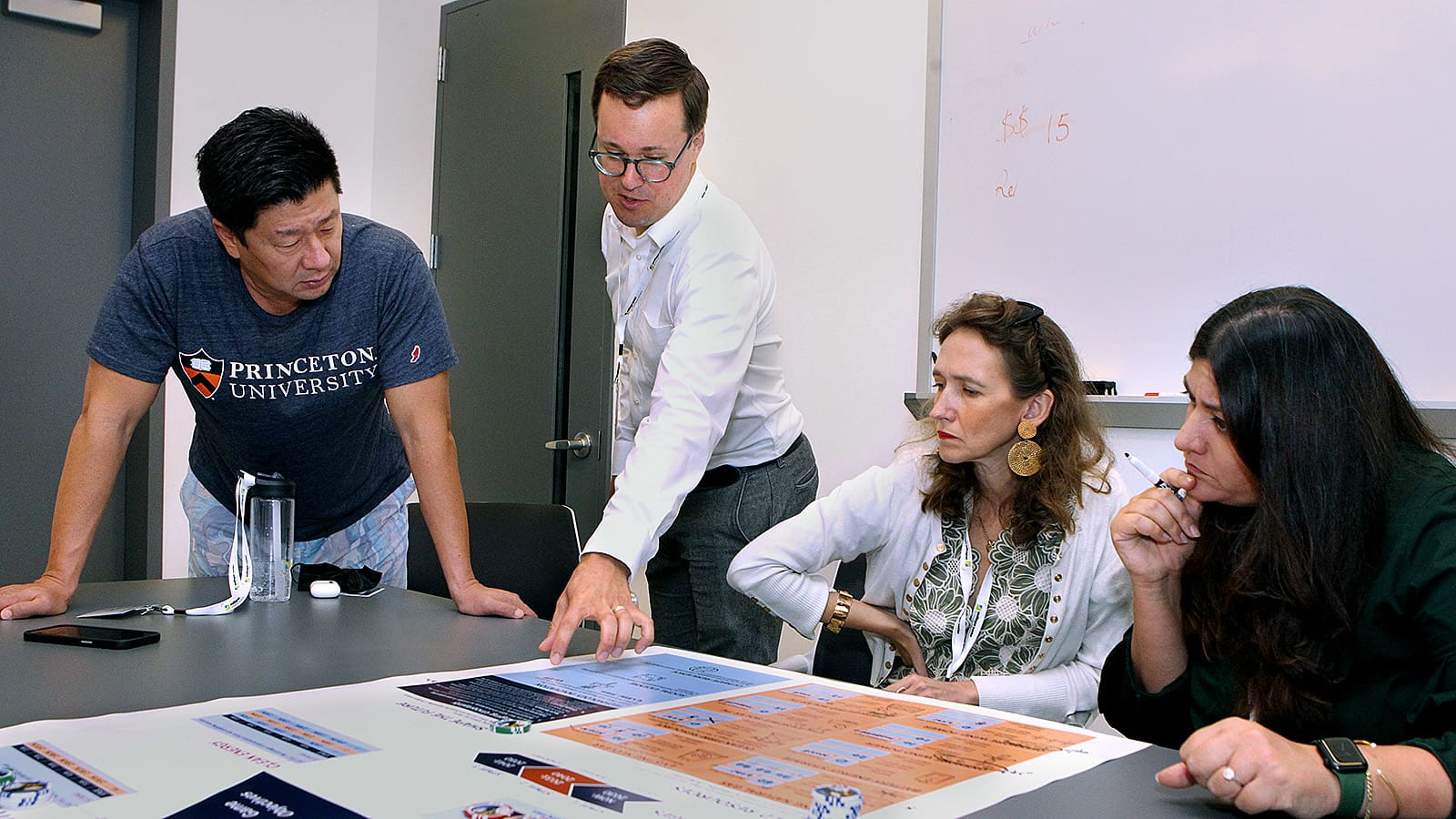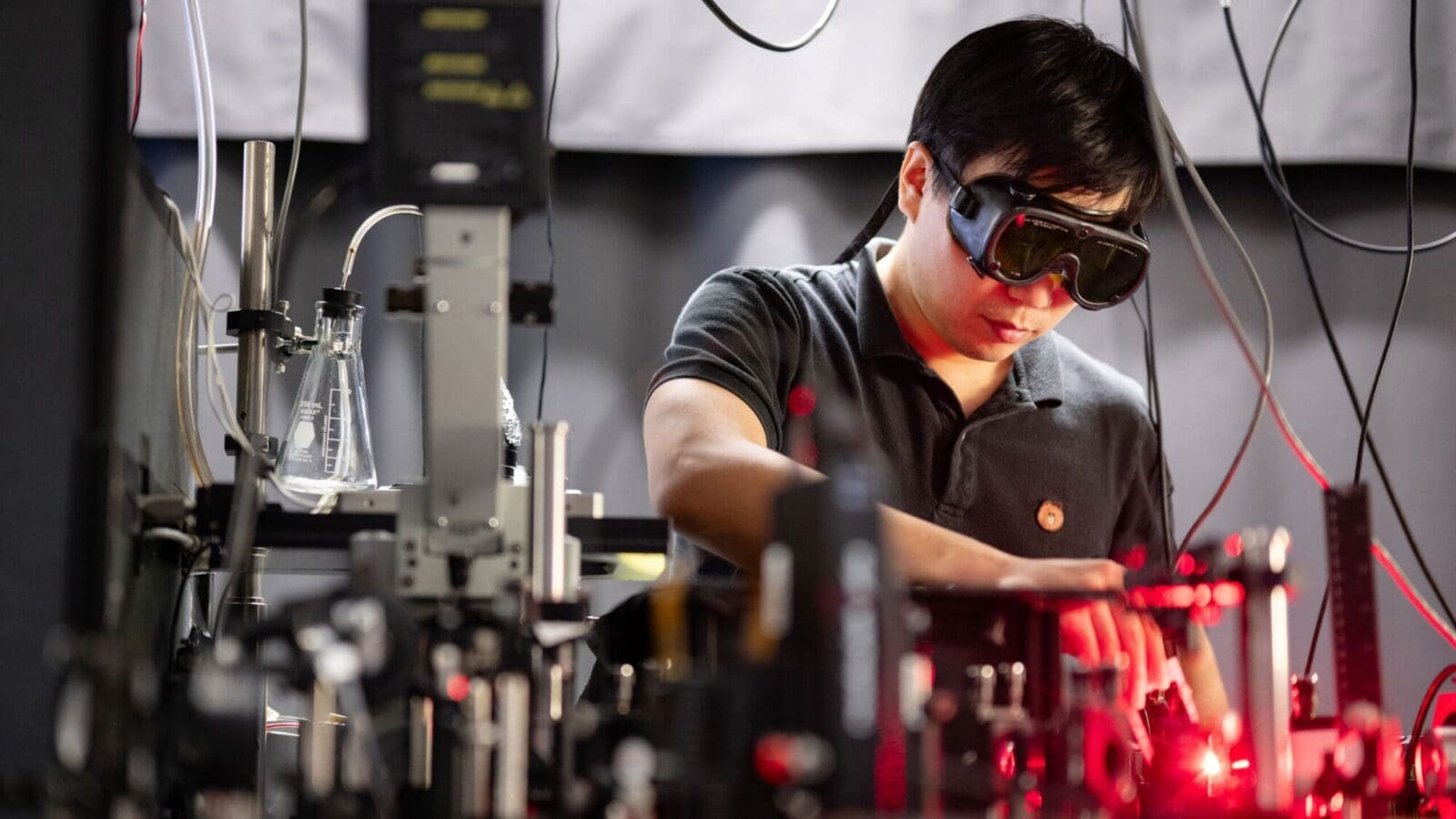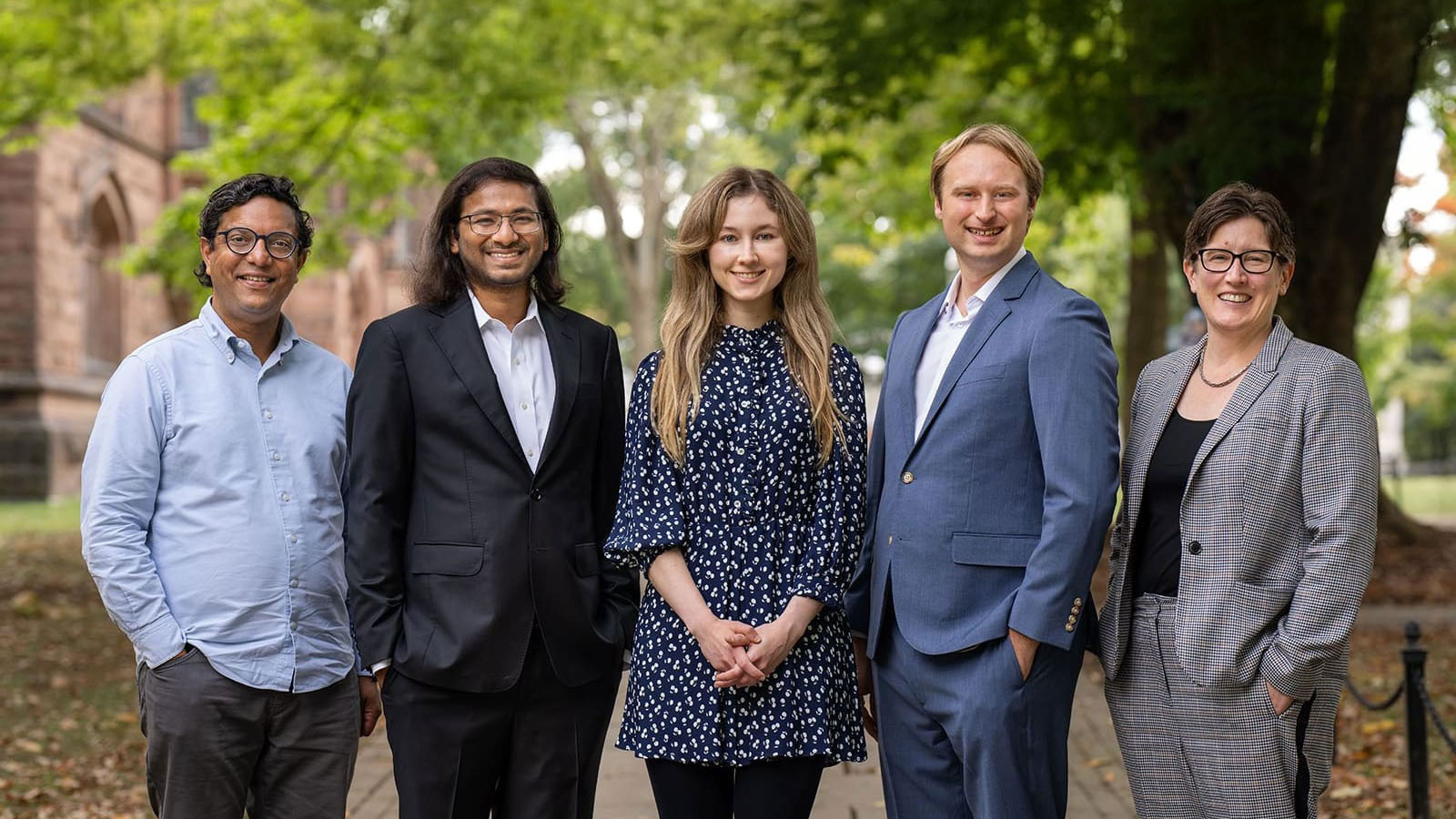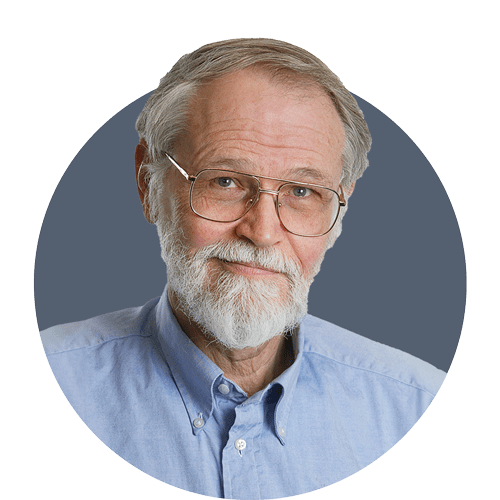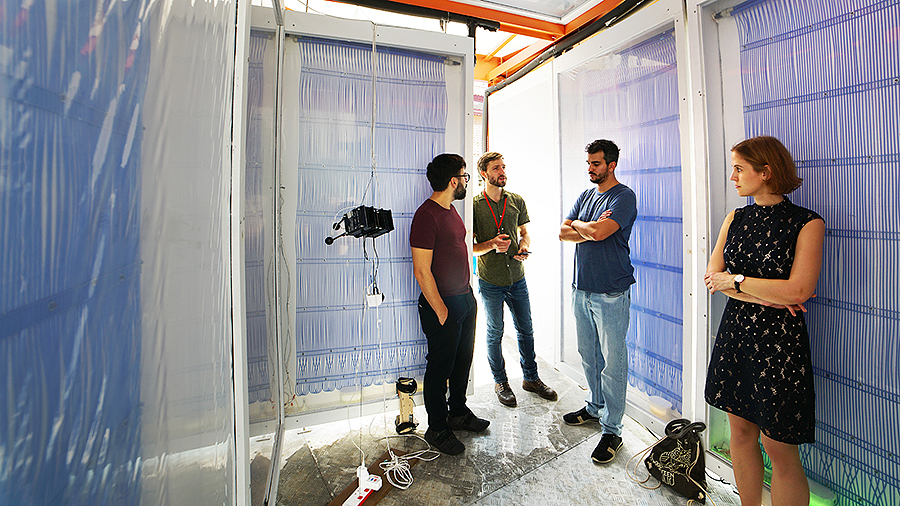
Part Fourteen: Hello, World
By
on
This is from the series E100: Princeton Engineering’s 100th anniversary
#81
In which Princeton Engineering department was Syukuro “Suki” Manabe a member of the faculty?
On October 5, it was announced that Syukuro “Suki” Manabe received the Nobel Prize in physics for developing a comprehensive model of the global climate that allowed scientists to understand for the first time how changes in the atmosphere and oceans would affect the planet’s climate. Although he has long been a senior meteorologist in the Program in Atmospheric and Oceanic Sciences, when he arrived at Princeton in 1968, he was a visiting lecturer with rank of professor in that program, as well as a Princeton Engineering department. Which department was it?
It was the Department of Mechanical and Aerospace Engineering. His work is part of the long history of climate research within the department, including work carried on today by Jesse Jenkins, assistant professor within the department as well as the Andlinger Center for Energy and the Environment (see Fact #25). Manabe was reappointed each year until moving to Princeton’s Department of Geosciences in 1976; today he is a senior meteorologist with the aforementioned program. On Oct. 5, Manabe was awarded the 2021 Nobel Prize in physics “for the physical modeling of Earth’s climate, quantifying variability and reliably predicting global warming.” The Royal Swedish Academy of Sciences noted, in announcing the award, that “Syukuro Manabe demonstrated how increased levels of carbon dioxide in the atmosphere lead to increased temperatures at the surface of the Earth. In the 1960s, he led the development of physical models of the Earth’s climate and was the first person to explore the interaction between radiation balance and the vertical transport of air masses. His work laid the foundation for the development of current climate models.” Manabe was one of the founding scientists of the National Atmospheric and Oceanic Administration’s Geophysical Fluid Dynamics Lab, which moved from Washington to Princeton due to the work of Joseph Smagorinsky of NOAA and MAE Professor George Mellor.
#82
“We all say we want social justice, but to get to that, it helps to be quantitative.” – Anu Ramaswami
Anu Ramaswami is working to show how cities around the world can grow in a sustainable way, from infrastructure to food to open space, to accommodate a growing population. She is an environmental engineer whose research connects engineering with social science and public policy. She works to gain a societal level view of how innovation can be harnessed to advance the well-being of people and the planet, locally in cities and globally.
She joined Princeton in 2019 from the University of Minnesota. Ramaswami is Princeton’s Sanjay Swani ’87 Professor of India Studies and a professor of civil and environmental engineering, and the Princeton Environmental Institute (now renamed the High Meadows Environmental Institute). She is the inaugural director of the M.S. Chadha Center for Global India at the Princeton Institute for International and Regional Studies. She has worked closely with officials in various cities to measure carbon emissions, a necessary step before carbon reduction; she has studied cities’ food systems and their effects on climate change, water use and land use; and she has shown higher energy use in non-white areas of American cities in a recent study, reflective of lower energy efficiency of homes there. “Making this type of data visible is helpful for making people understand that infrastructure-related racial disparities are not just some abstract thing—it’s real and you can see it in the data,” Ramaswami said. “We all say we want social justice, but to get to that, it helps to be quantitative.” She is the faculty director of the National Science Foundation-supported Sustainable Healthy Cities Network, anchored at Princeton. And she is a part of The Metropolis Project, an interdisciplinary initiative at Princeton, centered at Princeton Engineering, which works to advance technological innovations that will make cities more sustainable, resilient, livable and equitable.
#83
Which newly tenured associate professor uses radiant panels to cool a building?
Last year, a Princeton faculty member travelled to sweltering Singapore with his team to test novel insulated radiant panels to cool an outdoor pavilion. The panels held cold water pipes inside, which demonstrated radiant cooling. The technology could use far less energy than cooling large volumes of air with traditional air conditioning. This year, the faculty member, sometimes seen giving students a ride around campus on his extended bike, was promoted from assistant to associate professor. Who is this faculty member?
It’s Forrest Meggers. He and his team built a “Cold Tube,” an outdoor pavilion lined with novel insulated radiant panels that held cold water pipes inside. The participants who walked through the exhibit reported feeling cool, despite the air itself having temperature and humidity levels that would ordinarily feel sweltering. The research showed that people could feel comfortable in hot and humid outdoor environments using only radiant cooling, which could use far less energy than cooling large volumes of air. Meggers, who is jointly appointed in architecture and the Andlinger Center for Energy and the Environment and recently promoted to associate professor, focuses much of his research on saving energy in buildings through innovative heating and cooling. His work is one example of the cross-disciplinary approach of the Andlinger Center, which brings together a wide swath of researchers to solve some of the planet’s most difficult problems.
#84
“I don’t think anybody has ever gotten anything on the first try in Car Lab.” – James Almeida ‘17.
It’s a rite of passage for electrical and computer engineering students: each spring, they find their way downstairs in the Engineering Quad into a spacious, gadget-filled, brightly lighted room for “Car Lab.” It’s a spring junior-year course in which students, for their final assignment, make self-driving model vehicles. They have six weeks to order the parts, put them together, debug it and and get it up and running. Much of their work is trial and error. Students apply their imaginations to the personalities of the vehicles: during a recent year, they included a bot that balances on a giant beach ball; a vehicle that responds to spoken commands and barks like a dog; and a device that plays soccer. They use a variety of methods that allow the machines to sense the world around them, from digital cameras to sonar to temperature and magnetic field sensors. The class, formally known as “Building Real Systems,” allows students to apply the theoretical knowledge they’ve accumulated from their departmental courses in the service of building the vehicle in teams of two students apiece. “This is why people want to become engineers. You take an idea, and you turn it into reality,” said Andrew Houck, one of the professors overseeing the course.
#85
Researchers at Princeton collaborating with which tech giant applied artificial intelligence and control theory to build a better ventilator?
Researchers from Princeton Engineering joined forces with this major technology company in 2019 to start a joint lab aimed at deepening our understanding of machine learning and producing exciting innovations. Who was to know that within months, one of those innovations would be aimed at saving lives amid a global pandemic? This collaboration used artificial intelligence to handle the careful calibration of pressure, volume, and breath rate on a ventilator, work typically done by humans, allowing medical workers to attend to other matters. What company was that?
While much of the campus was quiet during the COVID-19 lockdown, researchers in Elad Hazan’s Google AI lab were busy working to improve the performance of ventilators and their support equipment. These expensive, complex devices require expert attention from doctors and other highly trained medical workers. Each device must be carefully calibrated to ensure they meet a range of parameters tuned to individual patients, including pressure, volume, and breath rate. If computers were able to handle more of the job, it could reduce the burden on medical workers. Hazan, a professor of computer science and director of Google AI Princeton, brought together a team to work on uncovering patterns in the data that would guide the safe and effective operation of the ventilator. That team includes Daniel Suo pictured here along with Paula Gradu ‘21, now a grad student at the University of California-Berkeley. They collaborated on the project with Daniel Cohen’s group in mechanical and aerospace engineering. May have been far from front of mind when Google’s AI Lab opened at 1 Palmer Square in 2019, but ther project was clearly in line with the lab’s more general goal of deepening our understanding of machine learning and producing beneficial innovations. At the opening event, attended by former Google Chairman Eric Schmidt ‘76 and New Jersey Gov. Phillip Murphy, Hazan said: “While Princeton is small, it has managed to have a huge impact, due to careful scientific work building on the foundations” laid by Princetonians like Alan Turing, visiting faculty member John von Neumann, and Nobel laureate John Nash. His team’s vision, he said, was to build on those foundations. “We’re really excited about a way forward.”
#86
“Hello, World!” – Brian Kernighan *69
It’s the simplest computer program there is, often the first run by nascent programmers, meant to give an early taste of success by displaying those two short words on the screen. It was created by Brian Kernighan, a professor of computer science at Princeton, more than 50 years ago as part of a manual he wrote for the early B programming language. He later repeated and popularized “Hello, World!” in his book about the successor C language. The language — and the book — today remain in general use. C was run on the operating system Unix, which was created at New Jersey’s Bell Labs in the mid-to-late 1960’s. Kernighan was part of the group at Bell Labs that created the Unix environment; he worked at Bell Labs for 30 years. Unless you’re using Windows, chances are the operating system on your computer is based off of Unix, which helped computing move past the punch-card era and toward a more user-friendly interface. As the author of a dozen books and manuals, he is known for his ability to speak to a general interest audience. In his 2018 book “Millions, Billions, Zillions: Defending Yourself in a World of Too Many Numbers,” he encourages readers to “start with a healthy skepticism about pretty much all numbers,” especially in a world filled with fake news and spin by politicians and advertisers. Kernighan, who earned his doctorate in electrical engineering from Princeton in 1969, returned in 2000 to join the faculty. He is a much sought-after teacher, having mentored generations of computer scientists in his current and previous roles. He was elected to the American Academy of Arts and Sciences in 2019 and the National Academy of Engineering in 2002. In an interview about his most recent book, he urged people not to be overwhelmed by numbers, arithmetic, or calculations. “I want my students – and my readers – to be intelligently skeptical about technology,” he said.
#87
Which buildings now sit on the originally planned site of the Engineering Quadrangle?
By the early 1950s, it was clear that the School of Engineering was quickly outgrowing its physical confines in Green Hall, and in 1954, the Board of Trustees authorized a project to build a new Engineering Quadrangle. This building was completed at the end of 1962 on the former site of University Field. However, in the original design, this was not the planned site of the EQuad. Where was the originally proposed site, and which two adjoining buildings sit on that site today?
In the 1950’s, engineering at Princeton was growing rapidly. The Engineering Quadrangle, completed in 1962, was designed to replace the school’s smaller original home of Green Hall. It was first planned for the west side of Olden Street, but was ultimately built across the street onto the site of University Field. That left room for expansion, effectively creating an engineering neighborhood. The originally planned location later became home to Computer Science — today the university’s largest major — as well as the Friend Center, where many university classes are held. The larger space for the EQuad also left room for the Andlinger Center for Energy and the Environment, which opened five years ago, and whose research is now leading clean energy transitions around the world. Now the School of Engineering and Applied Science, growing further, is preparing for its next set of moves. Great things are coming. More about that in a future fact in this series.
#88
“I am very excited about the new research possibilities and collaborations this facility will catalyze.” – Anirudha Majumdar
As you enter the EQuad through the main entrance, just beyond the piano and the double doors, something new (and tall) has been built in what used to be the engineering library. In January, the engineering school opened a new collaborative research space for robotics to support the rapid growth of research and teaching in this field. Spanning two stories at the northern end of the EQuad building, the robotics lab includes an aerial drone-flying space, a mobile robot area, a “living lab” furnished like a home, and a prototyping area, as well as faculty offices, grad student desks, and space for a robotics lab manager and technical specialists. The goal is to allow a range of experimental techniques and easy cooperation among teams from varied disciplines. “There is a tremendous amount of excitement around robotics at Princeton, and the new lab will act as a hub for robotics-related research activities in the school of engineering and beyond,” said Anirudha Majumdar, assistant professor of mechanical and aerospace engineering. “The space will serve as a home to collaborative projects led by multiple research groups from different departments. The facility is being equipped with state-of-the-art resources for fabricating and testing different robotic platforms including drones, legged robots, ground vehicles, and robotic manipulators. I am very excited about the new research possibilities and collaborations this facility will catalyze.” Photographed in the new space are grad student Charlotte Cathcart, who is advised by Naomi Leonard; and Jaime Fernandez Fisac (left) and his students.
#89
What is the mathematical question set into bricks at the Computer Science Building?
When the Computer Science Building was built in the mid-1980s, its new chair, Robert Sedgewick, had commissioned a mathematical question to be set into brick. What is it, and what does it mean?
P=NP? – a mathematical idea written as a question – has been a central challenge of computing since 1972. It is so central that it is written in binary code in the brickwork of Princeton’s Computer Science Building. You can see it if you look up high (and squint) near where the Computer Science building connects with the Friend Center. Founding department chair Robert Sedgewick called it a building “gargoyle” of sorts for the computer science age. With time the brickwork has become a bit less visible, but its meaning is no less powerful, or relevant to the department’s mission. In everyday terms, it can be seen as asking whether coming up with correct solutions to a math question is no more difficult than looking at somebody else’s solution and checking that it is correct, said Sanjeev Arora, the Charles Fitzmorris Professor of Computer Science. If the answer is yes, then it would imply that efficient algorithms exist for a large set of computational problems — so-called NP-complete problems–for which we currently lack such algorithms, he said. It would also imply that there are efficient algorithms to prove mathematical theorems, verify correctness of circuits, solve machine learning problems, break cryptosystems – and many other questions of real consequence. Arora works on computing approximate solutions to NP-hard problems. “The P=NP question is related to fundamental questions being studied in COS and SEAS,” said Arora, whose advisor, Richard Karp, played a pivotal role in developing the question. Such work on the theoretical underpinnings of computing is one of the pillars of Princeton’s broad strength in data science, propelling practical innovations as well as the study of how those innovations affect society.


